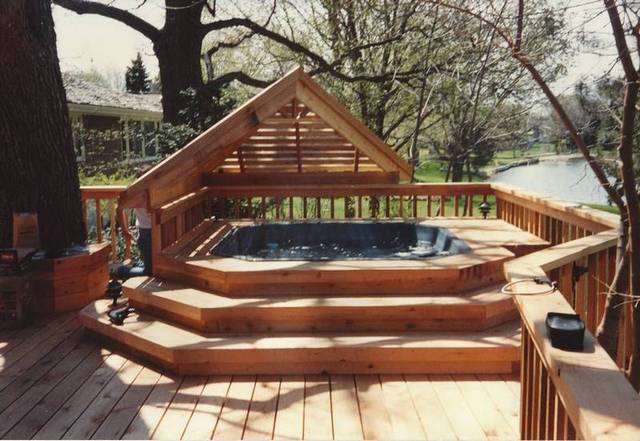
An interesting issue arose recently as to whether a hot tub should be included or excluded from a real estate transaction.
In the case at hand, a hot tub which was embedded in an outdoor wooden deck was initially included as an item that went with the property.
The “problem” was that the Buyer didn’t Offer enough money, so the Seller deleted the “hot tub”, as a negotiating item.
Can the Seller do this? Of course, it’s all part of the negotiations!
However, that does leave unresolved the outstanding issue, and that is whether the hot tub, if it were not mentioned at all, that is, “in or out” is actually “in or out”.
All of that depends upon the determination of whether the hot tub is a fixture or a chattel.
A chattel is something like furniture, it is a personal item. A fixture is actually part of the real estate. There are actually a lot of rules that apply to assist in the proper determination. And, you have to know these rules!
The legal issue is whether the item is “annexed” to the real property. This doesn’t mean attached, or affixed. That’s something which is “physical” in nature. A key to the front door is annexed, although it is not attached, and the combination to a combination lock on the shed doesn’t even have a physical existence. It is intellectual property. Both are fixtures. At the same time heavy bolts and nails securing the tenant’s printing press to the floor don’t make the printing press part of the real estate.
You have to have a look at the intention and purpose of the physical attachment.
Was the physical attachment made to:
- Improve the real estate, or
- Improve the better use of the item?
In the case under discussion, it would appear that “embedding the hot tub in the deck” would be the next step, and perhaps final step in the annexation. How, would it ever become more attached?
The attachment wasn’t necessary just for the purpose of securing it, so that it wouldn’t blow away in the wind! This hot tub is heavy. It is already connected by electrical wires, gas lines and a water hose to the house. That is the case, with or without the “built in deck issue”.
In my view, the “embedded” aspect closes the door on the chattel classification.
This configuration, in my view, does not lend itself to misinterpretation. But, that’s just me. To be on the safe side, it’s better to err on the side of caution and write an agreement which will confirm that the hot tub is part of the deal, it comes with the house. Then, who cares whether it’s a chattel or a fixture?
Brian Madigan LL.B., Broker
